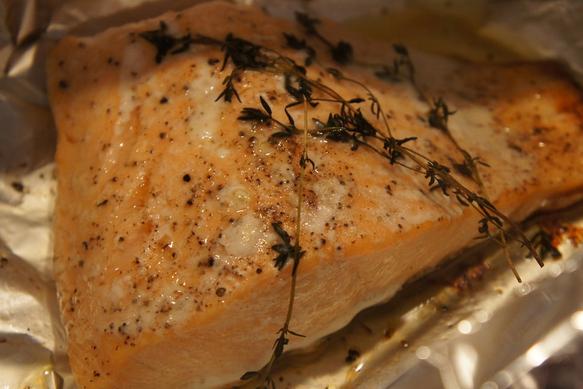How Long To Cook Salmon In The Oven At 425 Degrees?

Salmon and their cousins, trout, have been a favorite meal of mine since I was a child. A trout stream ran behind my home and I spent several summers catching fish for family dinners. My family prepared trout and salmon in several different ways but the simplest method was oven-baked. And the best part is that this method is super quick.
Contents
How long does it take to cook salmon in the oven at 425 degrees Fahrenheit?
After preheating your oven to 425 oF, salmon will be done in about 15-20 minutes or, more specifically, when it reaches an internal temperature of 145 oF. Baking the salmon past 145 oF will lead to dehydration causing your salmon to be dry and tough instead of moist and flaky.
How to Cook Salmon In Oven?
Some recipes call for the salmon to simply be laid in a baking dish skin side down. This works best for large fillets or butterfly cuts (a whole fish splayed open with bones removed). Other recipes, usually for smaller or whole fish, may suggest stuffing the fish with lemons and herbs then wrapping it in foil, paper, even leaves. Both recipe techniques will have roughly the same cook time of 15-20 minutes at 425 oF.
The White Stuff Albumin
Salmon sometimes releases a white fluid as it cooks. This is called albumin and it is perfectly safe and healthy. Albumin is just a liquid protein that congeals when salmon is cooked quickly. It can be avoided by cooking the salmon at increments of increasing heat which results in longer cooking times.
How do you check salmon for doneness?
Probe thermometer
The best method for ensuring doneness is with a probe thermometer. An instant-read digital probe thermometer is one of the best kitchen gadgets to invest in for baking, roasting, even frying. Some models of thermometers are inserted during and at the end of cooking to see the current temperature and some meat forks have added digital temperature options. Other models can be inserted before cooking and will provide read-outs throughout the cooking process with temperatures transmitted to your phone, tablet, or another connected device. My model has a ‘doneness’ chart on the screen that lists the ideal internal temperature for a variety of meats such as beef, pork, poultry, and fish.
Poke check
Though not as accurate as a thermometer, a “poke check” can be used to gauge doneness. To avoid burning your fingers you can use the back of a spatula to apply pressure to the salmon to check to see if it is firm. This takes practice to gauge accurately as overdone fish will be firm also.
Use A Fork
The “fork method” is also reliable and simple. Take a fork and just sort lightly tug at the salmon meat. The salmon, when done, should flake and peel away from the skin easily. This method allows you to sneak that test taste in before anyone else.
To Wrap up
I certainly hope your salmon turns out well and I am confident that the ease and speed of oven-baked fish will make it a weekly staple in your home.



